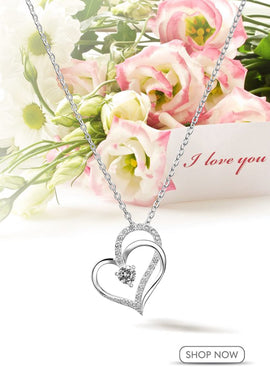In many cultures around the world, jewelry is often given to children as a form of protection against harm and negative energy, to honor a cultural rite of passage, and even as a token to celebrate a milestone in their lives.
Jewelry for children was often designed with special attention as it is meant to last and grow along with the child. In some cultures, protective bracelets and necklaces are made with adjustable links or chains to accommodate a child's growth, ensuring that the piece can be worn throughout their lifetime.
Now, there has been a growing trend towards personalized jewelry for children, with names, initials, and birthstones becoming popular choices. Personalized jewelry allows children to express their individuality and gives parents a way to create a unique and meaningful gift!
If you are considering purchasing a jewelry piece for a child, whether your own or someone else's, here are four important factors to consider when selecting children's jewelry.
Check Jewelry Materials
First, check if your child has any allergies!
Nickel allergy shows up as an itchy rash that appears where your skin touches a usually harmless substance, in this case, nickel. This allergy is often associated with jewelry, specifically piercing jewelry and costume jewelry. So, if your child has a nickel allergy, you should consider giving them hypoallergenic jewelry instead!
.925 sterling silver is a great option when it comes to hypoallergenic jewelry as it’s made of 92.5% pure silver, making it safe for those that have nickel allergies or are sensitive to other metals. Besides, sterling silver is stylish, comes in different styles and designs, and is easy to maintain, so your child can enjoy their jewelry for a long time.
Check for Sharp Edges
Sharp edges on jewelry can pose a significant danger to children as their skin is considered to be more delicate than an adult’s. It is important to check for any rough spots or sharp edges on jewelry before purchasing it for them.

When selecting jewelry for children, look for jewelry pieces or collections that are specifically designed for kids as they are often made with safety in mind and will be less likely to have sharp edges or rough spots. However, if you do find sharp edges or rough spots on jewelry, especially heirloom jewelry, that you would like to give to your children, try smoothing down sharp edges with a nail filer to reduce the risk of injuries.
Avoid Long Chains
Another thing to keep in mind is the length of chains for bracelets and necklaces. Long chains can pose a choking hazard to young children, especially those that are prone to putting things in their mouths. Besides, children may not have the dexterity to remove jewelry with long chains from themselves during emergencies.
So, try looking for necklaces with shorter chains or bracelets that do not have chains at all, like bangles. Bangles are a great option because they typically do not have small parts or chains that could break off and become a choking hazard. Additionally, bangle bracelets come in a wide variety of sizes (some are even adjustable!), so you can find ones that fit your child's wrist comfortably without being too loose or too tight.
Educate Children on Jewelry Safety
Last but not least, educate your child on jewelry safety before getting them their first accessory fashion. By teaching your children about the potential dangers of mishandling jewelry, you can make sure that they stay safe and enjoy wearing their accessories and jewelry.
By following these safety tips when choosing jewelry for children, you can ensure that your child's jewelry is both safe and stylish. Check out 3 tips for buying sterling silver jewelry for children.





















